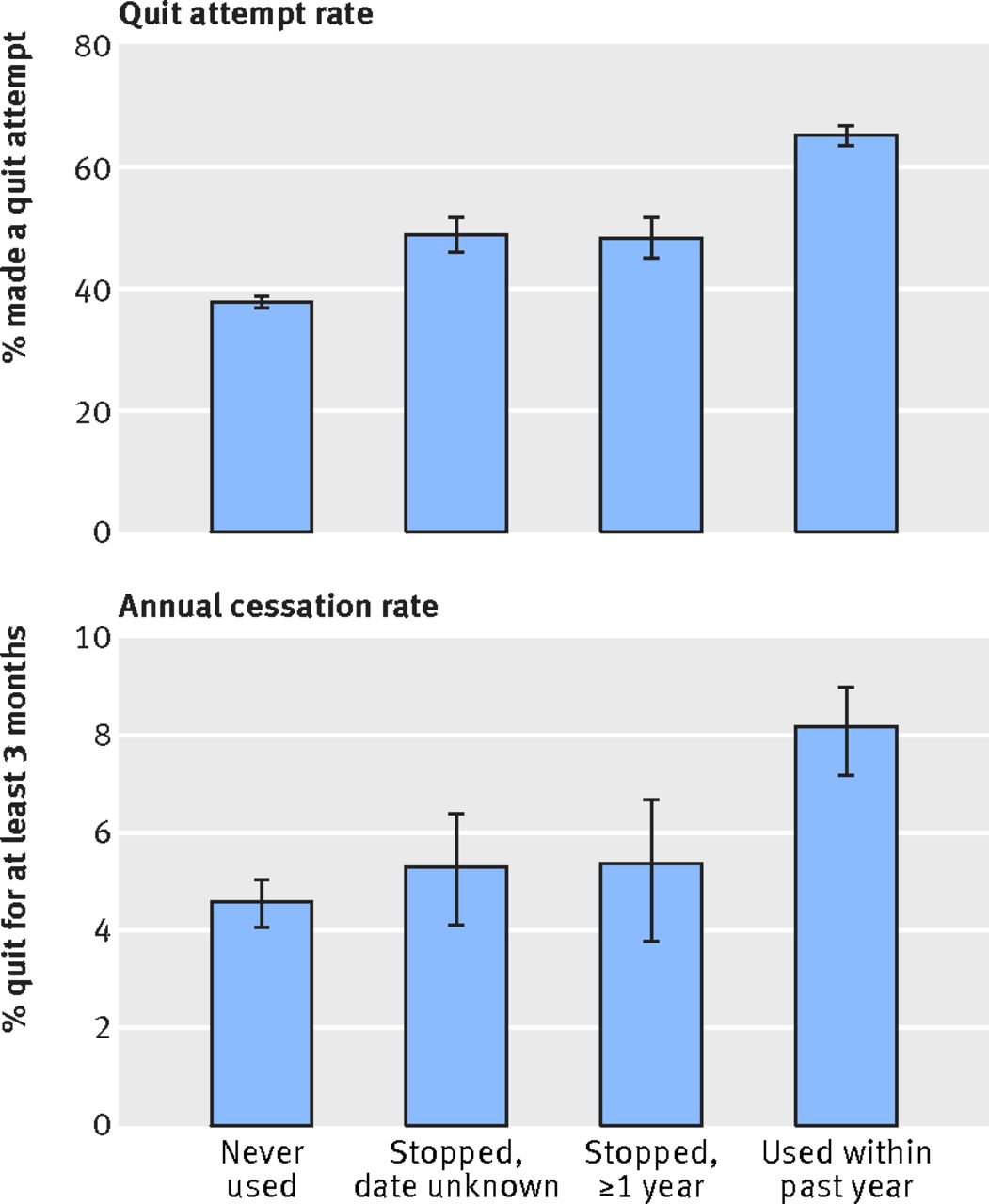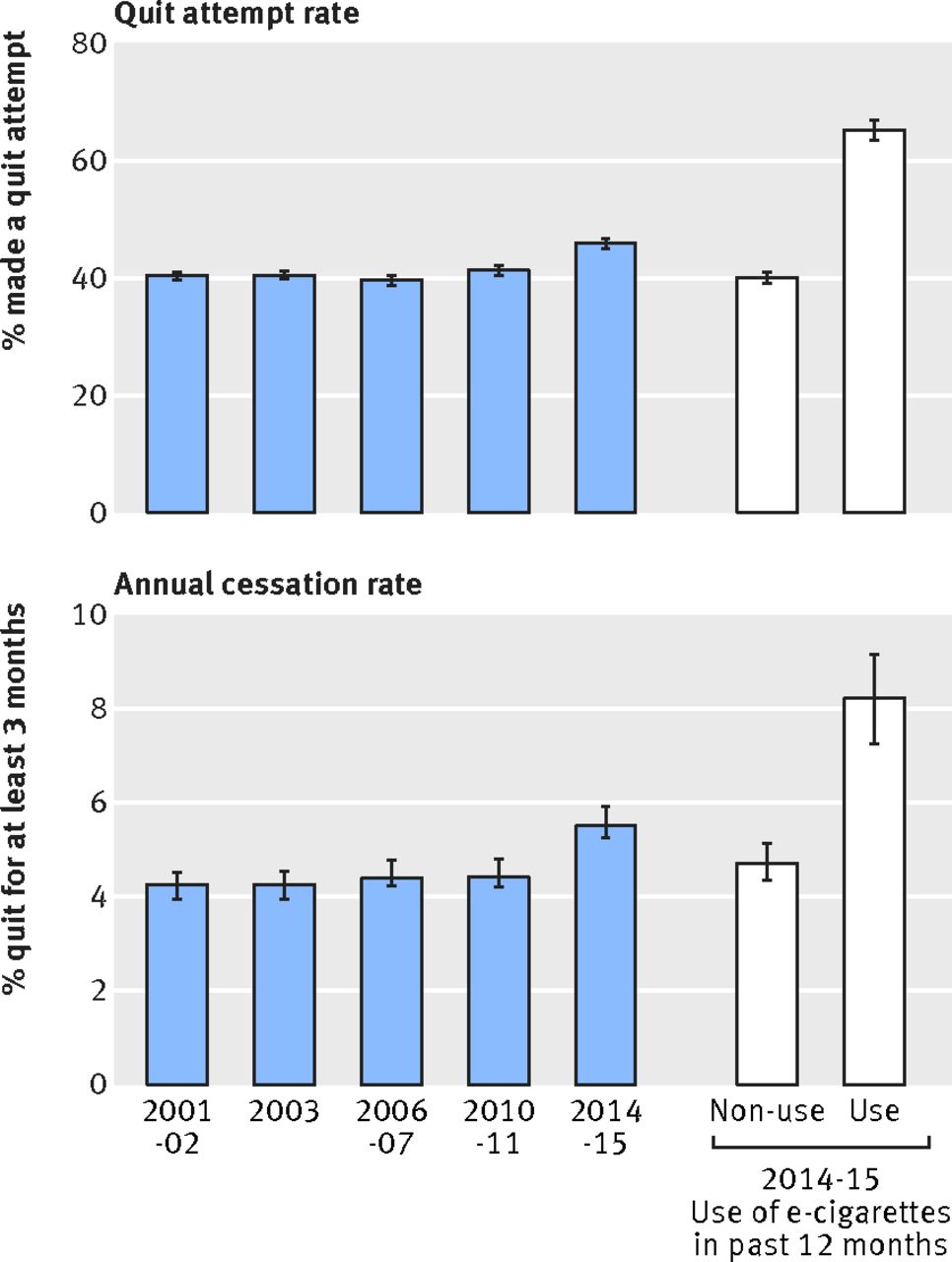Nicotine is one of the most addictive and widely used drugs in the world, bar none. And that's a big part of why it's so difficult for smokers to quit cigarettes. Of course, that's not the whole story, since there are replacement products that supply the drug without the damaging effects of inhaling smoke. However, these don't seem to be as satisfying since they don't mimic the movements and mode of nicotine delivery that accompany cigarette smoking.
Enter the electronic cigarette, or e-cig. The device can look like a cigarette (or cigar or pipe), but instead of burning tobacco, it provides a nicotine-containing vapor that the user inhales, thus getting a "hit" in the same way one would get from smoking. So, as a harm-reduction tool — to get smokers away from the deleterious health effects of smoking, e-cigs would seem ideal. But some have roundly criticized e-cigs as simply another way to get youth hooked on nicotine, and that using them was just a gateway to starting to smoke. In addition, others have criticized e-cigs by saying that there is no evidence that they would be used by smokers to help them quit. But now there is some such evidence.
Dr. Shu-Hong Zhu from the University of California, San Diego and colleagues analyzed data from five of the US Current Population Survey-Tobacco Use (CPS-TUS) surveys run between 2001 and 2015. Their report was published in the BMJ.
The investigators used data on the respondents (over 161,000) to the 2014 survey and compared those data to those of people responding to earlier surveys.
In that latest survey, smokers (23,000+) were defined as people who reported smoking cigarettes 12 months before the survey. Of these smokers, about 2100 reported having quit recently. About 49 percent of the quitters and 38 percent of non-quitters had tried e-cigs; about 12 and 19 percent respectively reported using them every day or on some days.
Dr. Zhu and colleagues reported that over all about 9 percent of the total sample had ever tried e-cigs, and about 2 percent were currently using them. They compared smoking quit attempts and cessation rates among those who had used e-cigs within 1 year to those who had never used them, those who had stopped using them, and those who had stopped using them for one year or more. People who reported using e-cigs in the past year were more likely to have made a quit attempt (65 percent) than those in the other 3 groups (range 38 — 49 percent). Further, the current or recent e-cig users actually had higher quit rates (8 percent compared to the other three groups (range 4-5 percent) as shown in the graph below.

When compared to earlier surveys, both the rate of quit attempts as well as the annual cessation rate was greater for people who used e-cigs than for those who didn’t, as shown below.

Thus, the main findings of this study were that first, e-cig users were more likely to try and succeed in quitting smoking than were non-users, and second, that between the surveys conduct in 2001-02 and those from 2014-15, the cessation rates significantly increased. Obviously, these surveys rely on self-reported information, and thus are subject to the usual cautions regarding such data. Further, as the investigators pointed out, “e-cigarette use itself could be an indicator of motivation to quit smoking, which would predict a higher quit rate.” They went on to acknowledge that public health efforts to get people to quit had also been more prevalent during the latter versions of the surveys, and that that may have acted synergistically with the additional quitting aid from e-cigs to help motivate smokers to quit.
These data give additional support to the utility of e-cigs as harm reduction tools, and as valuable aids to help smokers quit.

